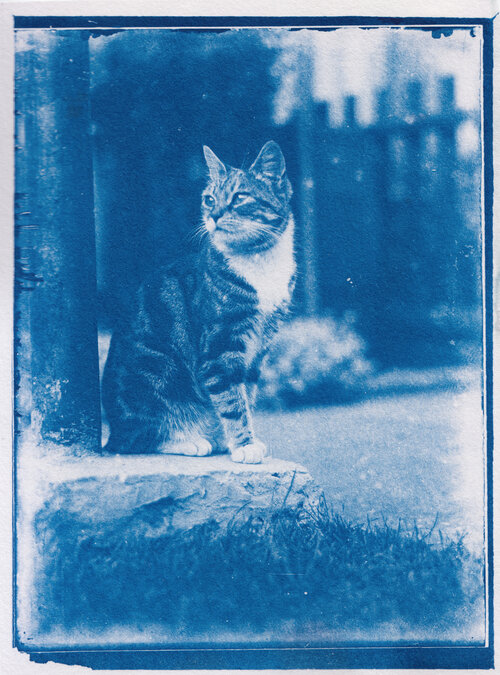When a relative told photographer Mathieu Stern that a century-old time capsule might lie in his old family house, he was intrigued. He got to searching and found some glass plate negatives inside a 120-year-old time capsule — which he decided to develop.
Rather unsurprisingly, it was a cat.

Step 1: Developing the photo
Stern is an experienced photographer who enjoys dabbling in all things photography. He decided to develop and print the photos using one of the oldest ways to make solar prints: Cyanotype.
Cyanotype is a photographic process that was mostly used in the 20th century as a simple and low-cost process to produce copies of drawings. The result is a cyan-blue print called a blueprint. The process uses two chemicals –ferric ammonium citrate and potassium ferricyanide — and perhaps unsurprisingly, you can find cyanotyping kits very easily nowadays.

You can see a video of the entire process below — but wait, there’s more.
Step 2: Colorizing

You can’t just post a century-old cat pic to the internet and leave it like that. Stern revisited the photo and colorized it. He first used an automatic colorization algorithm to get a feel for the colors, then looked for some reference photos, and then got to manual labor.
The result, as you can see above, speaks for itself — that’s one dashing feline! As before, Stern posted a full explanatory video of the process.
If you’re interested in this project, Stern also offers hi-resolution posters and prints of this cat — because all cats are cute, but not all cats are century-cute.
Stern also has a bunch of other interesting projects — when he’s not doing cyanotyping or building lenses from toilet paper or LEGO, he’s doing all sorts of weird and cool photoshoots (as well as reviews).





